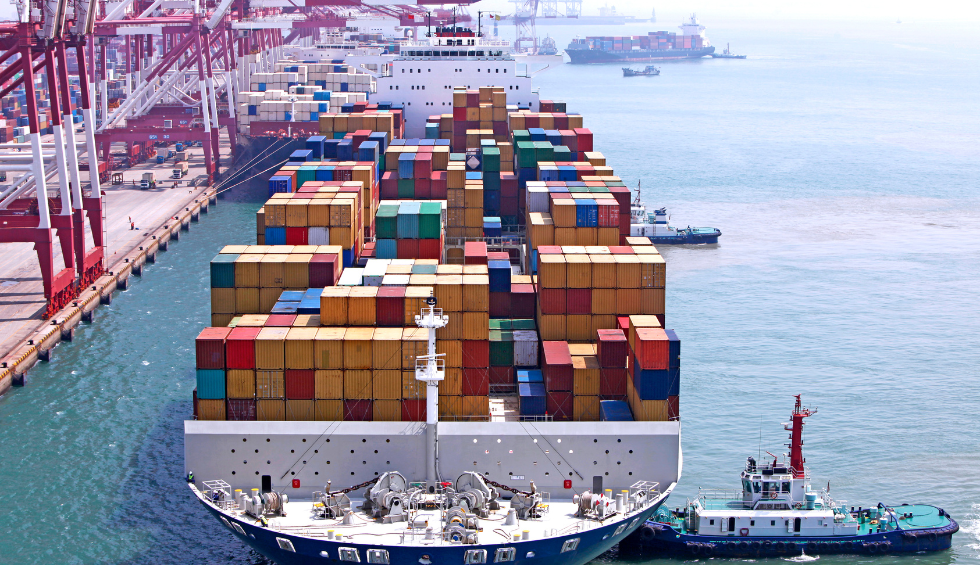Capital projects operate in industries which create high levels of waste and emissions, and large projects use vast amounts of resources. As the pressure to move towards cleaner and more sustainable practices is justifiably mounting, the way capital projects are delivered also needs to be examined. Due to their high environmental impact, capital projects also simultaneously have great potential for positive change. However, sustainability in capital projects is not simple due to their complex processes and supply chains. Therefore, new project execution practices, and digital tools to help, need to be utilized.
Whilst carbon reduction in capital projects is complex and there are many areas in which they can improve their sustainability, this article will focus on how more efficient management of materials throughout the supply chains of capital projects can bring significant sustainability benefits. Embracing new digital solutions in capital project materials management is essential and can play a crucial role in improving the sustainability of capital projects.
What is a sustainable capital project?
A sustainable capital project can be defined as one that implements ESG principles into their practices to achieve lower emissions and reduced use of non-renewable resources. A sustainable capital project should also aim to have positive impacts by encouraging sustainable operations and social change.
Why is sustainability in capital projects important?
Embracing sustainability in capital projects is of course foremost important for the future of our planet. However, there are also additional benefits which go beyond the environmental impacts.
Having strong ESG values is important for the reputation of a company which can have various positive business effects. We are already seeing a move away from fossil-fuel investments. It is expected that this will only be further highlighted in the future, where projects with good sustainability standards will attract investment easier. Furthermore, as sustainable values become even more appreciated in society, future talent and leaders will also favour organizations with strong ESG principles, so it can be viewed as important for the future development of the company as well.
Increased profitability and sustainability can also go hand in hand. Especially in materials deliveries in capital projects, many of the actions that improve sustainability are aimed at optimization and less waste of resources which can also have significant business benefits, especially in the long-term. As it becomes more sustainable, the supply chain also becomes more efficient, cost-effective and productive.
How can digital tools help with the sustainability challenges in material deliveries in capital projects?
Wasting resources due to inefficient processes is a common challenge in capital projects. Due to complex supply chains, it can be difficult to obtain full transparency into the flow of materials in the project. Therefore, a common problem that occurs is that materials go missing or no one knows the whereabouts of a specific component and therefore it has to be reordered with expensive air charters, which also cause high unnecessary emissions. Digital tools are crucial to achieve better transparency in these projects and avoid such wastes. Using a software such as a material handling system to track materials accurately throughout the supply chain can help reduce these wastes. The less resources that are wasted and unnecessary shipments that are made, the more sustainable the project becomes.
Indeed, optimization of resources is a central theme in the sustainability of capital projects which extends beyond lost materials. A common problem in the management of material flows of large capital projects, is great amounts of unnecessary manual labour. Using excel spreadsheets and emails is a common practice for managing the materials deliveries in capital projects which means great amounts of time is wasted updating spreadsheets manually and searching for specific emails. Updating these processes to use digital tools reduces time spent on manual tasks and reduces human mistakes made in the process. This can result in faster project completion which will immediately reduce resources used in the project. Furthermore, it can optimize processes during the project, which will also reduce excess uses of resources throughout the project execution.
Sustainability projects
Due to the time pressures of the climate crisis, there is also incredible pressure on the fast implementation of sustainability projects such as those in renewable energy. Coming years will see an ever-increasing capital reallocation into decarbonization projects. The speed at which the world needs to transition to a net-zero future requires huge amounts of these sustainable projects, and the faster they can be fulfilled the better. Another example of a crucial industry is the mining and metals sector, which provides many of the raw materials required. As these inputs drive many decarbonization projects, speed at getting these resources is also essential. Due to these time pressures, the utilization of digital tools is essential to optimize processes and avoid any possible delays in the production.
Embracing new solutions
Capital projects have traditionally been rather slow to implement changes in their processes. However, achieving better material and labour efficiency in capital projects plays an important role in the overall environmental impacts of projects. Digitalization can improve efficiency, productivity and sustainability of material deliveries. Therefore, it is crucial that innovative digital tools available for achieving this are embraced by capital projects.
Did you enjoy this post? You might also be interested in our blog posts on

Read about our material tracking system for capital projects
Sources:
https://www2.deloitte.com/content/dam/Deloitte/uk/Documents/blogs/deloitte-uk-delivering-sustainable-capital-projects-final-version.pdf
https://www.pwc.com/us/en/services/esg/library/sustainable-capital-projects.html
https://www.mckinsey.com/capabilities/operations/our-insights/global-infrastructure-initiative/voices/building-better-capital-projects-through-sustainability-benchmarks


